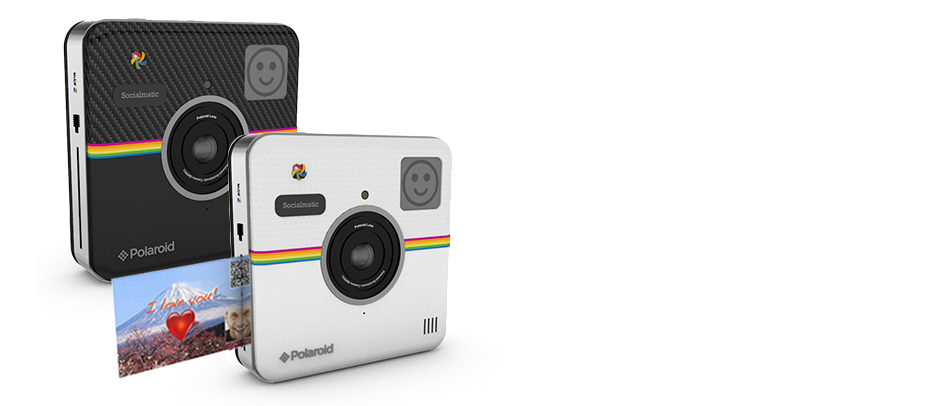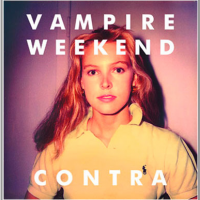The Consumer Electronics Show in Las Vegas is one of the biggest platforms in the world for announcing new photography kit. So what went down in 2015?
Polaroid's novelty slalom
Polaroid has been showing off a few different products at CES, and not all of them cameras. However, photographically the interest has been in its square-shaped instant camera, the Socialmatic, and the tiny cube-shaped C3 camera. Neither of them is especially a mainstream product, but there are plenty of companies who can succeed in making a go out of the novelty factor. The skill is in marketing a product to which people can become easily attached, at a price that works. Has Polaroid accomplished this? The Socialmatic was announced some time ago; now we're told that we can expect it in the autumn and it'll cost $299. It has a 14 megapixel front-facing camera and a two megapixel rear-facing camera. It is built on an Android platform. It can share images over a wi-fi connection or via Bluetooth. And it can print sticker photos using its built-in ZINK printer. Along with its square shape, that's its killer feature that gives it desirability and the necessary degree of novelty. The question is, would you spend $299 on a novelty camera? Of course it is going to have appeal to some people, but I suspect they'll be limited in number. Continuing to use the smartphone that you already have and linking it up to a (much cheaper) Fujifilm instax SHARE SP-1 printer would make much more sense.

The C3 cube, on the other hand, seems to hold more appeal. It measures 35mm by 35mm by 35mm; holds a five megapixel camera with a lens that has a 120° angle of view; is waterproof to two metres; and it contains 2MB of internal storage that can be augmented with a micro SD card. There's a button to release the shutter and it'll cost $99. It's perfect for any sort of remote-controlled vehicle, for sticking to a helmet or set of handlebars, or for wedging in a corner. It's still a novelty device, but a more affordable one.
Settled out-of-court: the model, the album cover, and the polaroid

Over a year ago there was a bit of a hoo-haa involving the band Vampire Weekend, the photographer Tod Brody, and the former model Ann Kirsten Kennis. In a nutshell? Brody licensed an image of Kennis to Vampire Weekend, which they proceeded to splash across on the world on the cover of their album, Contra. Slight problem was, Kennis claimed that she never signed a release for the image and that Brody had no right to use it commercially. Kennis filed a law suit against Vampire Weekend and Vampire Weekend filed a suit against Brody. Up to speed?
Well, a year on and Kennis has settled out-of-court with Vampire Weekend and their record lable, XL. The sum is undisclosed, but Kennis orginally looked for $2 million.
The case of Vampire Weekend versus Brody is on-going, however, with Brody defending himself because his lawyers, Lavely & Singer, quit in June. Seems that lawyers don’t much like it if you don’t pay their bills and don’t at least try to co-operate with them when they’re trying to defend you.
(Headsup to PDN)
Story magazine launches across London. And online.

Just when we thought that print-based media was in its death-throes, two brave photographers – Sophie Allen and Richard Doran – have launched a brand new visual art, culture, and photography magazine. What’s more, it’s available for free. Yep. Really. It’s called Story. If you’re around London, you can pick up a print copy in a selection of bookshops, galleries, and cafes. Otherwise, there’s an online version awaiting your delectation.
Published quarterly, all the articles in every edition are linked together through a theme, however tenuous it might be. The idea is that each article forms a part of a narrative, making the edition into a story. Clever, that. (Although my mind does keep flitting back to the Alan Ayckbourn play Confusions, which is actually four short, tenuously linked plays.)
This quarter’s edition includes a debate about technology versus the medium, with Polaroid photographer Rhiannon Adam; a 24 hour picture project by five artists from different cities across the world, using disposable cameras; and a gallery of contributed art with the theme ‘manipulation’, amongst other stuff.
If you can’t pick up your London print copy, take a look online at www.storymagazine.co.uk





